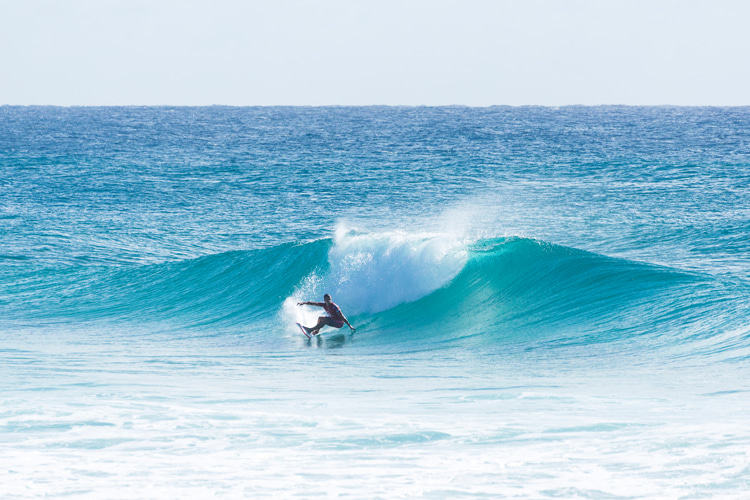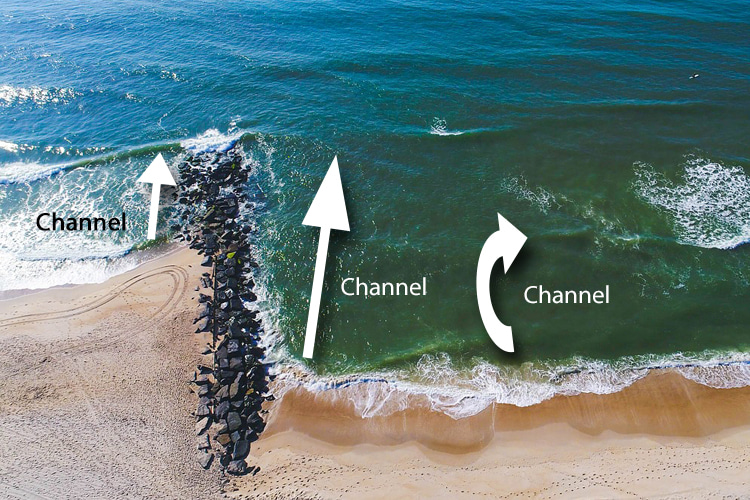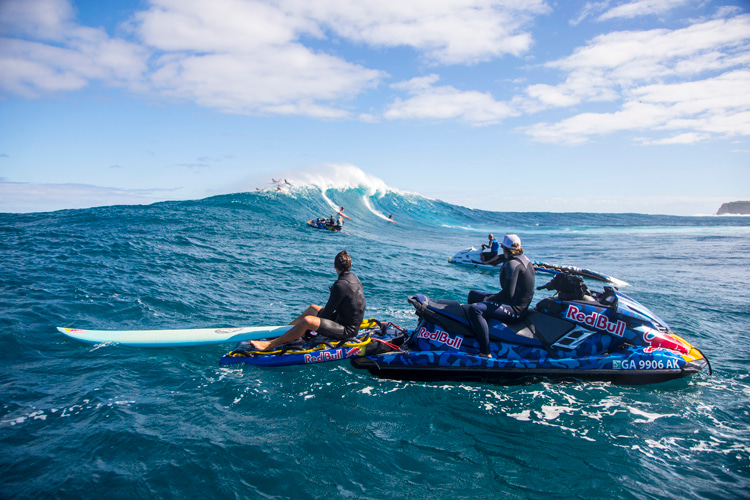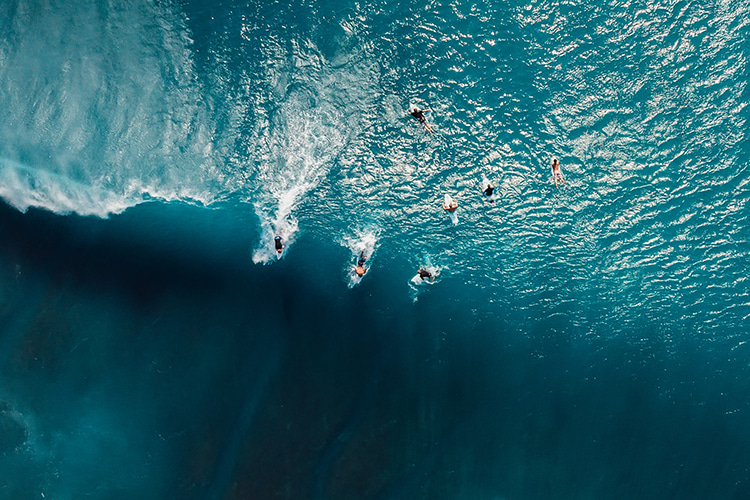Surfers often use deep water channels running adjacent to the surf breaks or wave peaks to get to the lineup faster and effortlessly.
A channel is a current that usually runs perpendicular to the beach and provides a quick and safe route into the surf zone.
Channels can also help create underlying high-to-low bathymetric profiles that tend to create consistent, predictable, and often perfect waves.
From a wave-riding perspective, these currents can form in classic, multi-peak beach and reef breaks on both sides of the breaking waves but also close to jetties, piers, and breakwaters.
The channel is an area where waves rarely break.
Temporary (sandbanks) or more permanent (reefs) bathymetric obstacles can create short-term or enduring channels, respectively.
In most cases, channels need deep waters to be effective and efficient and always encircle the peak from one or both sides.

The Advantages of Using Channels
They work as a passageway into the lineup and dramatically reduce the need to duck-dive incoming waves and sets.
So, by simply paddling around the surf zone and being boosted by the outgoing flow, surfers and wave riders, in general, save a lot of energy and time.
Getting the most out of a channel can be especially helpful in extreme conditions and heavy waters.
However, it also requires above-average ocean reading skills and knowledge of the surf break's characteristics and dangers.
Surf channels also allow surfers to analyze the type of wave, the seafloor, and even other dangerous currents that could affect the lineup.
Last but not least, the channel is a well-known stand-by area where surf photographers take their eye-striking pictures, an excellent learning area for beginners, and an observation zone for non-local surfers.
How to Spot a Channel
The following illustration shows how surfers can get to the lineup fast without having to duck dive every single incoming wave:

How to Safely Use a Channel
The channel is a great way to reach the lineup fast and with your hair still dry.
Actually, many times, it's better to ride a wave to the beach or paddle in near the shore and then re-enter the water using a current.
However, this approach should only be followed by intermediate and advanced surfers who know exactly how these liquid highways work and where they'll take you.
Here are a few safety tips for using channels at surf breaks.
- Pay close attention to the channels and other currents' behavior before paddling out;
- Visualize an imaginary route to the lineup;
- Make sure to stay away from other fellow surfers' riding lines while getting out the back;
- Be prudent and cautious while taking advantage of a channel;
- Keep relatively close to the surf zone;
- While paddling out, try to identify the take-off point;

Channels Near Jetties, Piers, and Breakwaters
At point breaks, you can find currents channeling water back to the sea close to coastal protection structures like jetties, piers, breakwaters, and groins.
These human-made shoreline defenses often generate rip currents that can quickly transport a surfer to the lineup almost without paddling or arm power.
However, because they lead to wave-breaking and take-off zones, channels could potentially put beginners and inexperienced surfers at risk.
So, if you're new to the spot, spare a few minutes to figure out how local riders take advantage of these fast rips.
Also, maintain a safe distance from the rocky structures and pay attention to occasional and sudden changes in the current's direction.
Ideally, avoid duck dives. Instead, wait for the set to pass by and/or try to get over the top of the waves.
Finally, make sure to paddle in the opposite direction (or at an angle) direction of the rocky structures.
